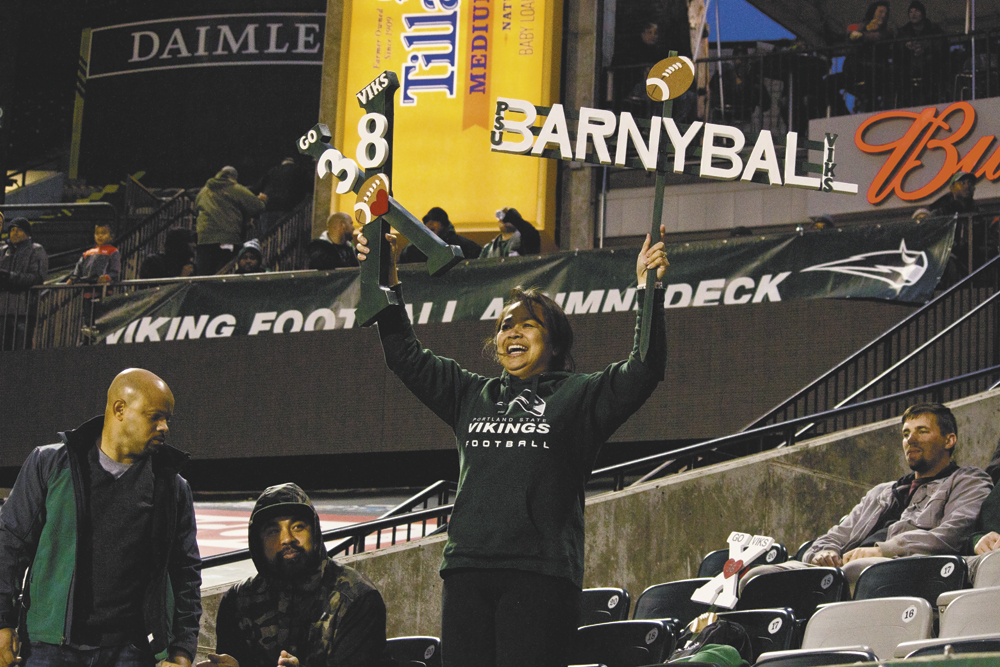Classrooms crammed to capacity
Classroom capacity struggles to keep up with enrollment at Portland State University, and in the wake of competition over rooms some classes have been left without basic necessities.
Humanities classes that need mobility for small group work and discussion have been assigned to rooms with immobile furniture. Graduate English courses bottleneck on Tuesdays and Thursdays, limiting choice. Students learning about the Israeli-Palestinian conflict fight over who gets a chair and who gets the floor.
In the past decade, PSU enrollment has nearly doubled and is now approximately 22,000. Between 1994 and 2004 instructional space has also increased by nearly 100 percent, reports the Portland State University Portfolio web site. Even though progress has been made, “challenges remain with respect to adequacy of classroom space,” according to the portfolio.
“We’re in a space crisis,” English professor Amy Greenstadt said. “There’s more and more students and not enough classrooms. We get creative.”
Instructors seek out non-classroom facilities to hold their classes, Greenstadt said.
With a little over 100 general use classrooms for about 2,500 course sections it is often difficult for departments to obtain rooms that meet their needs.
“The humanities need moveable chairs and mobility for group work and discussion,” Greenstadt said. “That’s really what it comes down to.”
Cynthia Sloan, associate professor of Spanish and Portuguese, stated a need for mobility in foreign language classes.
“Language learning has very unique needs. You have to have mobility. They have to get up and interact,” she said.
Competition for limited classroom space may also lead to a “bottleneck,” with courses being offered on the same time and day, hindering students’ opportunity to take the courses they want, Greenstadt said. In the case of graduate English courses, she explained, many are scheduled during the same time slot on Tuesdays and Thursdays. Of the 25 graduate-level English courses held at specific time slots, five are offered on Tuesdays and Thurdays at 10 – 11:50 a.m., five at 12 – 1:50 p.m., and four at 2 ?” 3:50 p.m. Greenstadt said that graduate students have expressed frustration over this scheduling predicament.
The space shortage also manifests itself through overcrowding.
“I had this one class, Palestinian and Israeli conflict, and people were sitting on the ground,” said Rola Khouri, a third year business management student. “You had to fight to get a seat.”
Khouri said she noticed the recent construction of the engineering building, but would like to see the same kind of investment in general use classrooms.
Academic Scheduling is careful to keep enrollment within classroom capacity limits, said Niko Lande, assistant director of production and scheduling. When overcrowding occurs, it is most likely because the instructor inadvertently permitted more students than the room allows. “I think it is with the best intentions because there simply is such a high demand for classes.” Insufficient seating in a classroom may also be due to chairs not being where they should be, Lande added.
Lande said that it’s important for instructors to let her department know their needs and preferences for classroom space, such as the number of students, technology needs, and time of day. “For us it’s really important that we get the information well in advance.”
The scheduling department controls approximately 110 classrooms and assigns rooms for about half of the 5,000 course sections offered each term. The remaining half of the sections are scheduled by academic departments into rooms that are controlled by those departments.The number of course sections (CRNs) offered this year is a 15.44 percent increase from five years ago.
“The competition [for classrooms] is greater,” Lande said, adding that more classroom space and high quality classrooms are definitely needed on campus.
Increasing enrollment and a shortage of rooms hasn’t been the only challenge for classroom space. A “room analysis” conducted by facilities and planning in 1999 found that most instructional rooms on campus contained too many “student stations.” The university was in violation of the Fire Marshall’s standard of 1 student station per 20 square feet. In order to comply with the building and fire codes, PSU was required to remove 607 student stations in classrooms, 79 in seminar rooms, 216 in class labs, and 374 in auditoriums.
According to Robyn Pierce, interim director of facilities and planning, the problem has been responded to. “We have worked closely with the Scheduling Office to ensure all our general pool classrooms are at code.”
A number of new classrooms have been added to the campus since 2004, Pierce said. Shattuck Hall has added six new rooms, two in Neuberger Hall, and five in the Broadway Housing Building. In total, the 13 classrooms have added 562 student stations.
A Campus Physical Planning Committee has been appointed by President Bernstine to examine how PSU will accommodate an enrollment of 35,0000 students, said Ernest Tipton, Manager of Campus Planning and Design. “They’re looking at what types of classrooms, size, and how many will be needed,” Tipton said. “We found that in order to meet a 35,000 enrollment we’ll need about 113 additional classrooms.” The planning committee determined that 111 new classrooms will be needed.




